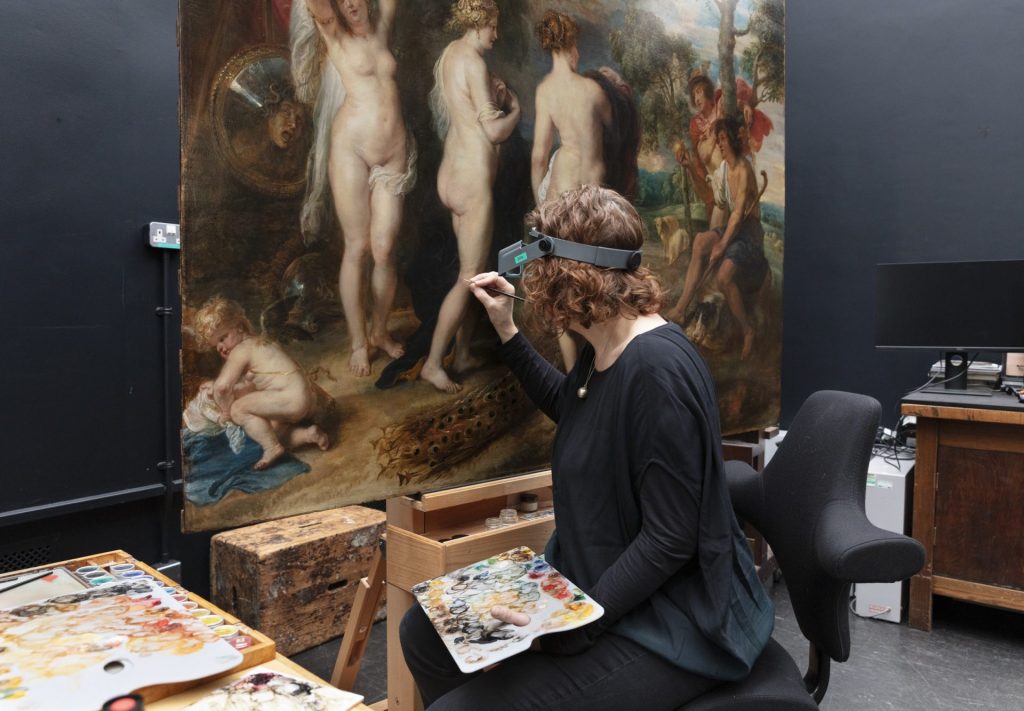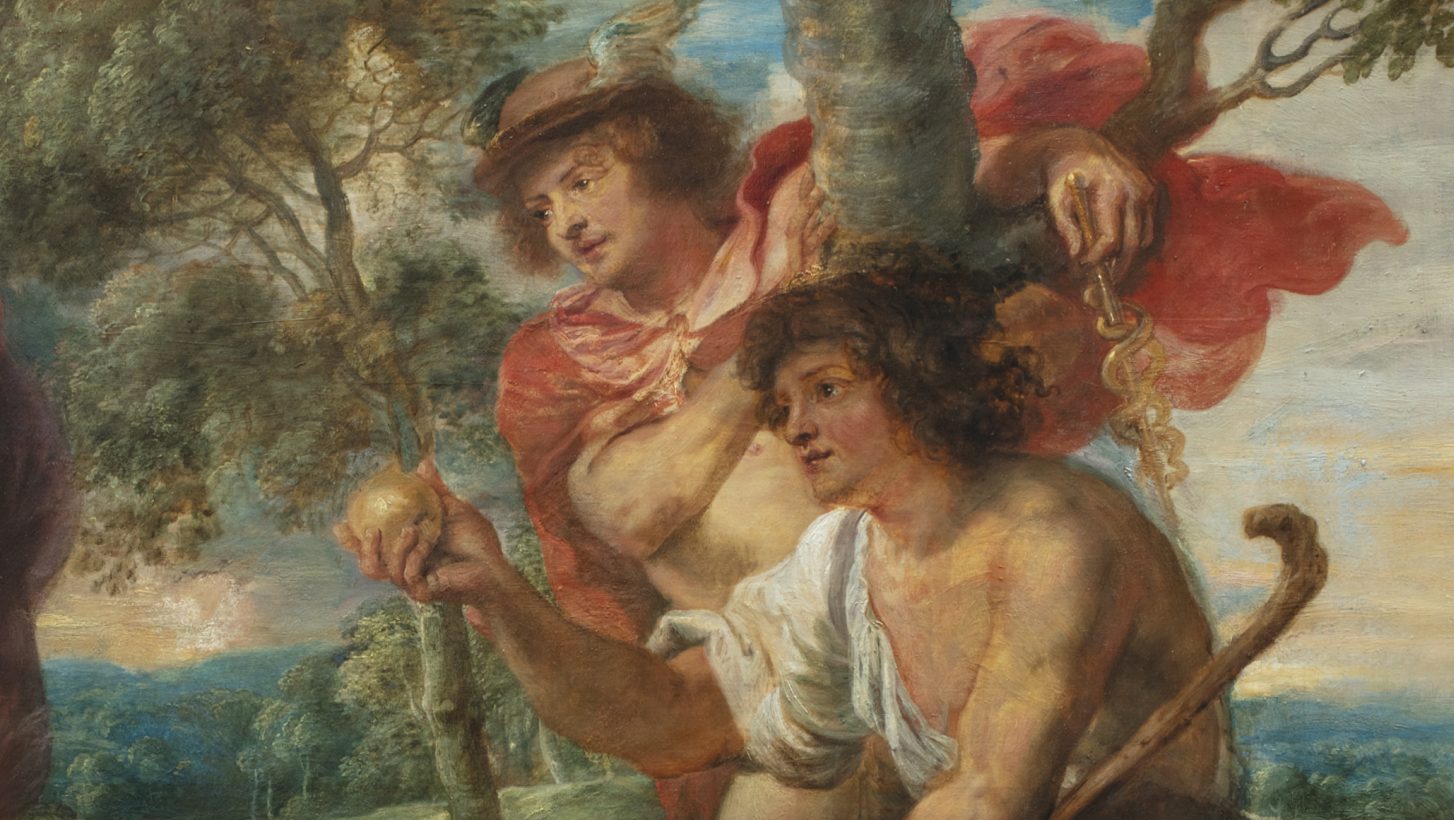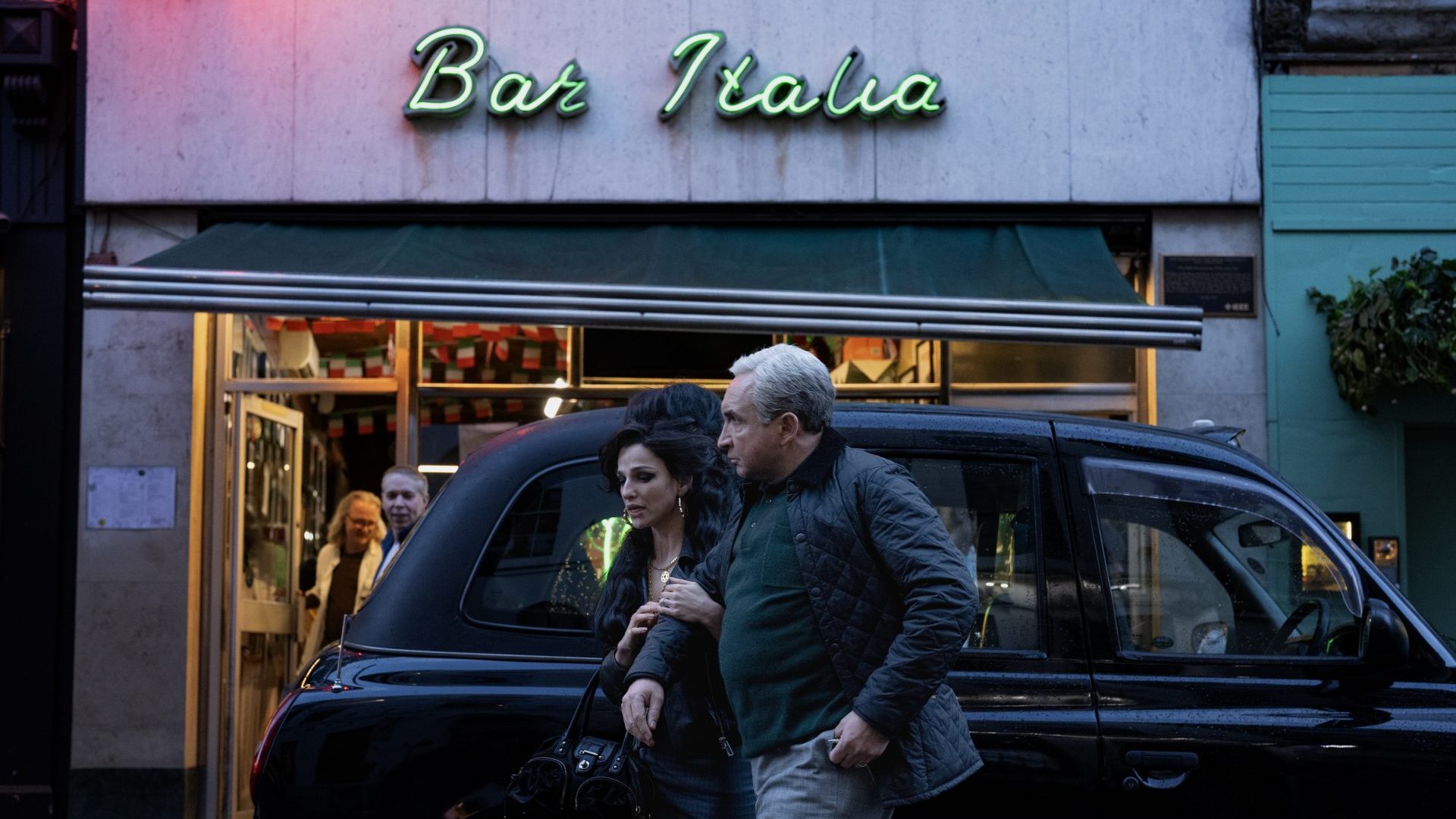He puts his right leg in, he puts his right leg out… Paris, son of Priam and Hecuba in Greek mythology, performs this elegant hokey-cokey in the finest of Peter Paul Rubens’s four versions of an incident in the boy’s action-packed life.
To recap: before his birth, Hecuba dreams that she delivers not a baby but a fiery torch. Paris’s illegitimate, soothsaying half-brother, Aesacus, interprets this as a sign that the boy will bring about the fall of Troy, and should be destroyed. Unable to sacrifice his son, Priam hands him to his shepherd Agelaus, who leaves him to die on Mount Ida. But Paris is suckled by a wolf and found by Agelaus, who raises him as his own.
Later, Eris, goddess of strife, when left off a wedding guest list, throws a golden apple intended for “the most beautiful”. Squabbling over that title are Juno, Minerva and Venus.
On Zeus’s instructions, Mercury leads the three to Paris, now a young man, who is told to choose the winner, by whatever means he devises. Luckily for Rubens, a renowned painter of female flesh, Paris decides that they must disrobe to aid his decision.
At the National Gallery in London there are early and late depictions of the moment when Paris chooses the central figure, Venus, a scene that Rubens painted four times in all. And it is the National Gallery’s later version, painted in 1636, that reveals Rubens’s repeated changes of heart as his composition evolved. The Judgement of Paris has given up its many secrets during extensive conservation of the painting in the run-up to the gallery’s 200th anniversary celebrations.
One of several works under scrutiny in the conservation department, backstage at the gallery, it has passed through several owners – and conservators – in its nearly 400 years. But it is today’s imaging techniques, coupled with extensive shared scholarship, that shed more light than ever on this masterpiece.
Most fascinating to many who will see the work anew once back on display are the traces of pentimenti – the artist’s alterations as he overpaints his own, earlier ideas – and of amendments by later hands. Conservator Britta New must make her own Paris-like judgments as she dives through the layers of painting revealed by infrared technology.
And, with the head of conservation at the National Gallery, Larry Keith, she aims to strike the balance between presenting the work as Rubens intended it and as it has evolved, with interventions by others. “Recent Rubens scholarship shows that he was capable of lots of changes,” explains Keith. “People find pentimenti exciting, because they show process. Rubens is quite elusive – he’s always altering.”
Conservators, therefore, are balancing two sets of changes – Rubens’s own and the amendments of his successors, notably an artist in the employ of the Duc de Richelieu, who by the year 1676 had The Judgement of Paris in his collection, from where it passed to the Duc d’Orléans, and upon the dispersal of that collection, to the National Gallery, in 1844.
The artist’s own changes reveal a master working fast and inventively, even as he revisited a known and oft-painted narrative scene, with which viewers of the day would be familiar. Notably, he extended the image by about 30cm both at the foot of the picture and to the right, as the painting progressed, adding horizontal panels in both directions, one at the base and five at the side, and extending features of the painting into the new space.
Most dramatically, that includes the full, spectacular tail of Juno’s peacock and the hem of Mercury’s fluttering red Superman cape. Other raiment underwent change, notably Venus’s robes, which once concealed more of her generous form.

Rubens also painted out the mischievous child, or putto, over her head. The surviving putto, in the bottom left-hand corner of the picture, was turned to face one side while acquiring some non-Rubens wings, thanks to a later painter, who thus turned him into Cupid. Two more of his little companions were simply painted out later in the picture’s life.
Rubens had intended one to pull helpfully at Venus’s falling blue cloak. A second tugged so forcefully at Minerva’s white undergarment that she is almost pulled to one side by the effort. One disembodied little hand is still visible, ghostly behind the diaphanous folds.
The painting was, therefore, perhaps unusually, not sexed up but sexed down when in Richelieu’s possession. And the story has been moved on a few frames, as we know from a copy made of the painting in Rubens’s day, now on display at the Staatliche Kunstsammlungen in Dresden. This indicates that Mercury and Paris were originally more actively engaged with the goddesses. Rubens’s Paris is still deciding: he holds the apple close to him, but seems to be indicating with his extended leg that the visitors should strip off.
It is as if he is close to lifting their garment with his toes. Or is he just something of a country bumpkin, swinging his bare knee and hunched under a big rustic straw hat, eyes cast down? Has he even ceded something of his unexpected power to Mercury, who extends an arm and points down, as if to say, “clothes off, ladies…”.
The painter who thought he could do better than Rubens made other changes. The shady boater, for example, was out and in its place came a full head of curls that flattered Paris’s newly prettied-up face.
That we can today see traces of these “improvements” is partly down to the passage of time: pigments have faded and original features have peeped through, spectrally. The contours of Paris’s once lowered right arm are visible today through the folds of his white sleeve, even as he holds out the apple.
Analysis of cross-sections of paint layers help to establish which are Rubens’s changes and which are those of Richelieu’s painter. Any changes under a layer of varnish were Rubens’s pentimenti: above it, they are additions. We can also determine which pigments were used – sometimes, as in the case of smalt, a blue that discolours in time to grey, visible in Rubens’s sky. He did also use more costly ultramarine, in Venus’s blue cloak.
Conservation work does not end with the image. “As he progressed, Rubens realised that there were problems with panel painting,” explains New. “Some of his panel paintings have split because the grain is different.” One of her tasks has been to replace the double layers of narrow battening that support the picture from behind and allow for a degree of flexibility.
As with so many artists, a turning point in Rubens’s burgeoning career came with his first visit to Venice, in the year 1600, when he was only in his early 20s. There followed a sojourn at the important court of Mantua, and a total of eight years spent in Italy at a rich time, learning in person or from the legacy of artists including Titian, Veronese and Tintoretto.
In Rome he absorbed the work of Michelangelo, Leonardo da Vinci, Raphael and, crucially, his contemporary and the master of chiaroscuro, Caravaggio. In 1606 he received a commission for the high altarpiece of the Chiesa Nuova, Santa Maria in Vallicella, a highly coloured piece that is far removed from his later, more subtle work.
He was so enamoured of the Italian art scene that he would correspond in Italian and sign himself in an Italian version of his name, Pietro Paolo Rubens. He would have stayed longer, but he hastened back to Antwerp, where he had been raised, on hearing that his mother was mortally ill. He always planned to return to Italy, and never did, partly kept at home by the combination of peace and affluence.
For conservators, the balance always has to be found between the natural evolution of a work of art, and the artist’s original intention. A painting acquires not only the patina of revarnishing or candle grease, but also of changing tastes and styles, as other hands get involved.
This project is being funded by Bank of America – the first such collaboration with the National Gallery. Although it has supported the conservation of more than 200 works in 40 countries, this is only the third time the bank’s cultural arm has been involved in the conservation of Rubens, one of the other two being the Courtauld’s Cain Slaying Abel. Previous UK projects include work for Tate on Andy Warhol’s Marilyn Diptych and for the Wallace Collection on Jean-Honoré Fragonard’s The Swing.
The bank’s Art Conservation Project has also backed conservation work at the Louvre (Winged Victory of Samothrace), at the Reina Sofía in Madrid (Picasso’s Woman in Blue), and in Ireland (Lavinia Fontana’s The Visit of the Queen of Sheba to King Solomon).
Rubens was not without his critics. Some disliked his robust figures and rural landscapes, which they compared unfavourably with other artists’ more elegant characters amid Arcadian scenery.
Back at the National Gallery, Britta New continues to make her own judgements about which aspects of Rubens’s much-changed masterpiece to bring out, and which to subdue. “The painting has a history, and that history cannot be erased,” she says. “But we want to make it right.”




